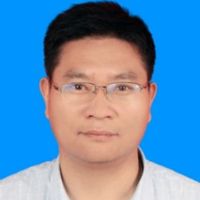Triboelectric Nanogenerators: From Fundamental Research to Applications
A special issue of Micromachines (ISSN 2072-666X). This special issue belongs to the section "A:Physics".
Deadline for manuscript submissions: 31 January 2025 | Viewed by 2015
Special Issue Editors
Interests: piezotronics and flexotronics; piezo-phototronics and pyro-phototronics; tribotronics, contact electrification, and tribovoltaic; nanogenerators and self-powered sensors; surface acoustic wave devices
Special Issues, Collections and Topics in MDPI journals
Interests: nanogenerators; oxide ferroelectrics; piezo-phototronics; intelligent sensors; photodetectors
Interests: piezoelectric; triboelectric; wireless sensing
Special Issues, Collections and Topics in MDPI journals
Special Issue Information
Dear Colleagues,
Energy scavenging is of significant importance as energy consumption is quickly increasing. Moreover, clean energy sources are highly desired due to their environmentally friendly properties. In 2012, Prof. Zhong Lin Wang invented the triboelectric nanogenerator (TENG) to harvest mechanical energy and convert it into useful electricity, providing a clean and alternative solution to the energy consumption crisis. The basic working mechanism is the combination of contact electrification and electrostatic induction. The further in-depth physics of TENG have demonstrated a Maxwell’s displacement current. Moreover, the contact electrification as well as the surface charge density are of great significance since the output power density is strongly relevant to them. Therefore, it is definitely important to explore more in-depth physical understandings regarding the fundamental studies of TENGs, from the origin of contact electrification to the working principles based on Maxwell’s displacement current. Furthermore, TENG can be utilized for not only mechanical energy harvesting, but also self-powered sensing systems and high-voltage applications. Hence, it is also necessary to develop the practical applications of TENGs in real conditions. Accordingly, this Special Issue titled “Triboelectric Nanogenerators: From Fundamental Research to Applications” seeks to showcase research papers, short communications, and review articles that focus on (1) the fundamental science and research related to TENG, from the origin of contact electrification to the working principles based on Maxwell’s displacement current; and (2) innovative practical applications of TENGs in mechanical energy harvesting, blue energy harvesting, self-powered sensing systems, high-voltage applications, and so on.
Dr. Wenbo Peng
Prof. Dr. Haiwu Zheng
Dr. Jinkai Chen
Guest Editors
Manuscript Submission Information
Manuscripts should be submitted online at www.mdpi.com by registering and logging in to this website. Once you are registered, click here to go to the submission form. Manuscripts can be submitted until the deadline. All submissions that pass pre-check are peer-reviewed. Accepted papers will be published continuously in the journal (as soon as accepted) and will be listed together on the special issue website. Research articles, review articles as well as short communications are invited. For planned papers, a title and short abstract (about 100 words) can be sent to the Editorial Office for announcement on this website.
Submitted manuscripts should not have been published previously, nor be under consideration for publication elsewhere (except conference proceedings papers). All manuscripts are thoroughly refereed through a single-blind peer-review process. A guide for authors and other relevant information for submission of manuscripts is available on the Instructions for Authors page. Micromachines is an international peer-reviewed open access monthly journal published by MDPI.
Please visit the Instructions for Authors page before submitting a manuscript. The Article Processing Charge (APC) for publication in this open access journal is 2600 CHF (Swiss Francs). Submitted papers should be well formatted and use good English. Authors may use MDPI's English editing service prior to publication or during author revisions.
Keywords
- triboelectric nanogenerator
- contact electrification
- Maxwell’s displacement current
- mechanical energy harvester
- self-powered sensing system
- high-voltage
- tribotronics
- tribovoltaic
- contact-electrocatalysis
Benefits of Publishing in a Special Issue
- Ease of navigation: Grouping papers by topic helps scholars navigate broad scope journals more efficiently.
- Greater discoverability: Special Issues support the reach and impact of scientific research. Articles in Special Issues are more discoverable and cited more frequently.
- Expansion of research network: Special Issues facilitate connections among authors, fostering scientific collaborations.
- External promotion: Articles in Special Issues are often promoted through the journal's social media, increasing their visibility.
- e-Book format: Special Issues with more than 10 articles can be published as dedicated e-books, ensuring wide and rapid dissemination.
Further information on MDPI's Special Issue polices can be found here.








